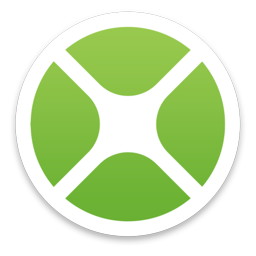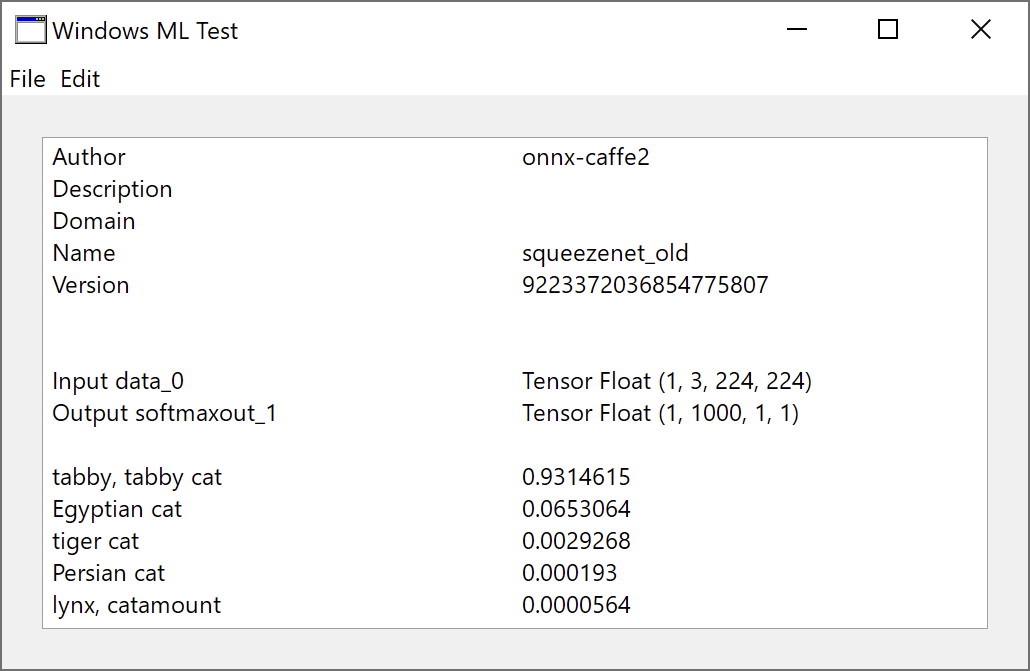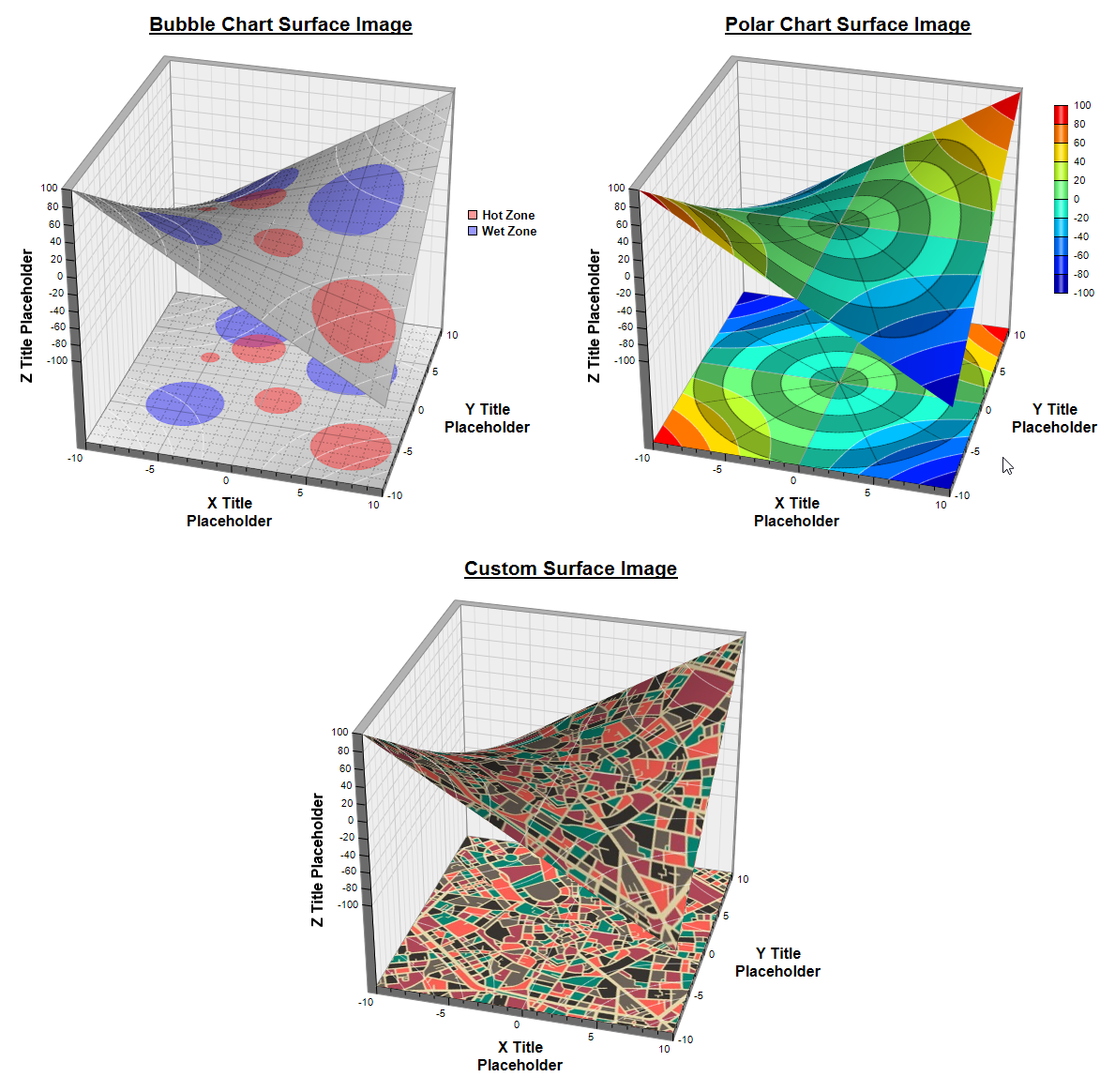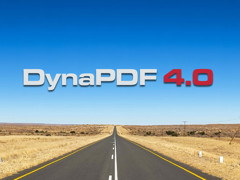
Xojo Inc. dropped an update for Xojo 2020r1:
Download and
Release Notes. It improves the web target with 32 bug fixes, 5 changes and 6 new things. This fixes the most urgent things in the Web 2 framework and is certainly welcome to get quick fixes there. Most welcome are Pressed events for WebLabel, WebImageViewer and WebCanvas. We hope in future to have an universal Pressed event for all controls, which carries additional parameters like modifier keys.
For desktop projects, you find a bug fix for the HTMLViewer issue
Bob talked about. A text conversion bug was fixed, so we may encounter failed assertion in REALstring.cpp less frequent. Still we prefer those being exceptions and not assertions as we want to get a stack trace and show our bug reporter dialog. The fixes for Double.IsInfinite and Double.IsNotANumber make you wonder whether this functions have been tested at all by anyone before releasing. United tests may be a good for such basic functions! HTMLViewer on macOS can now pass floating values and the Linux IDE should now show the help even if some webkit library is missing.
In general the update is very welcome. Kudos for Xojo Inc. to do a .1 release and pushing the fixes to us without letting us wait months for the next bigger release.
As of today we have no idea what may come in r2 this year as Xojo Inc. hasn't announced anything in this regard. We do hope for a more bug fix orientated release. Web 2.0 and API 2.0 may have enough issues to keep engineers busy. Add a dozen bug fixes for long standing issues and we would be happy. As Apple is launching Apple Silicon soon, support for that target should be prioritized, so Xojo is ready and developers like us have a chance to test Xojo projects and our plugin functionality before Apple ships the hardware to customers. We already compiled 20.4 release for macOS with ARM 64-bit to make sure things do compile.
 We have started to look on the Windows Learning APIs to implement some functions for our plugins. Since 2017 we have CoreML functions for macOS. FileMaker 19 now ships similar functions built-in, but we think the plugin can still do more. As we are now using newer Visual Studio 2019, we can finally also check the Windows Learning functions:
We have started to look on the Windows Learning APIs to implement some functions for our plugins. Since 2017 we have CoreML functions for macOS. FileMaker 19 now ships similar functions built-in, but we think the plugin can still do more. As we are now using newer Visual Studio 2019, we can finally also check the Windows Learning functions:
You can use ONNX Models with the classes, so check the Microsoft website on how to get models. This mainly points to the ONNX Model Zoo, which has some interesting models available.
We started by porting the desktop SqueezeNetObjectDetection example from the Windows-Machine-Learning repository. You may want to download the SqueezeNet.onnx file from models folder and the kitten_224.png file from the media folder.

In Xojo you can use WinLearningModelMBS class to load a model with the Load function. Then query details and the input/output features to learn what the model does. Once you want to use the model, create WinLearningModelSessionMBS and WinLearningModelBindingMBS objects. The last one is used to assign values to the input and output elements. Then you Evaluate the model and get a WinLearningModelEvaluationResultMBS object and there you query the result values.
For FileMaker we embrace JSON and use it to pass values for the new WindowsML functions. Use WindowsML.Open to load the model and query all information about it with WindowsML.Description function. Use bind functions like WindowsML.BindImageFile to assign input image, run the model with WindowsML.Evaluate function and then you get a result as JSON. You may use our JSON functions to work on the result and show it to the user.
A difference between the macOS/iOS implementation by Apple and the one by Microsoft is the missing of labels for the latter. For Windows you get a Labels.txt file with the list of what index in the result points to what label they mean. Our example code will show how to handle this.
Those functions and new classes are coming for next pre-release versions in October 2020. We may get a good start set and may add more as needed later. Especially as we learn what other models may need as input and output features.
 In this article I want to introduce you the new functionalities from the MBS Xojo Plugins in version 20.4.
In this article I want to introduce you the new functionalities from the MBS Xojo Plugins in version 20.4.
The new FileMaker Plugin
Our plugins welcome a new plugin in their circle, the FMAPI plugin. With this plugin you can use Claris FileMaker Server Data or Admin APIs from Xojo.
With instances of the FMDataMBS you get a connection to the FileMaker Server. For the login you need user name and password or OAuthRequestId and OAuthIdentifier for oAuth. A connection attempt can look like this:
Dim d As New FMDataMBS
d.Password = "admin"
d.Username = "admin"
d.Server = "localhost"
d.Database = "test"
Dim r As FMResponseMBS = d.Login
We can then run searches on this connected database, read, modify, add, duplicate and delete records. We pass queries to the database to the appropriate functions. These are instances of the class FMRequestMBS with various details. On return we get result objects of class FMResponseMBS.
(more)
 With MBS Xojo Plugins 20.4 we include a new MBS Xojo FMAPI Plugin part with a few new classes to connect to a Claris FileMaker Server:
With MBS Xojo Plugins 20.4 we include a new MBS Xojo FMAPI Plugin part with a few new classes to connect to a Claris FileMaker Server:
The FMDataMBS class does a Data API connection while the FMAdminMBS class provides methods for the Admin API. Both have FMConnectionMBS as base class for the core functionality to connect.
(more)

Just seven months till the
XDC 2021 in London, England. Tickets are still available for $750 USD till
1st October 2020 1st April 2021 instead of $950 later.
It will be held
April 21-23, 2021 October 13-15, 2021 March 30-April 1st, 2022 in London, England at the
Holiday Inn Bloomsbury. This conferences is the best place to meet Xojo developers from around the world in real live, make contacts, present yourself as expert and learn what is new in Xojo. Tickets are available in the
Xojo store and if you bring your partner, you can order an extra guest ticket for the dinner events.
Check out the
conference highlights video if you want to see what it's like - or ask one of the many attendees from the forum!
Wether you are full or part time Xojo developer, this is your chance to learn all about the Web 2.0 framework, the Android progress and what's new in the Xojo world.
To get there, please use public transportation. The piccadilly line brings you right from Heathrow Airport to Russell Square Station, just next to the hotel. That trip should cost about 3 £ and you may just pay by tap in/out with your NFC enabled credit card or phone. Otherwise buy an Oyster card and load money on it if you don't have such a card. If you come by Eurostar train through the tunnel from France, you can exit Pancras station and just walk to the hotel. Otherwise take one station via subway to Russell Square Station. That station is right behind the hotel block.
See you soon there!
PS: We hope COVID-19 is mostly done by April 2021. As Geoff Perlman, CEO of Xojo Inc., said in a recent hangout event, in case of cancellation that would be end of the year and everyone is refunded. So you can sign up and book flights early in January.
Nickenich, Germany - (September 15th, 2020) -- MonkeyBread Software today is pleased to announce
MBS Xojo Plugins 20.4 for macOS, Linux and Windows, the latest update to their product that is easily the most powerful plugin collection currently available for Xojo.
MBS Xojo Plugins have been updated and now includes over 2600 classes and 70,000 documented features, and the versatile plugins have gained more new functions:
The main feature of the newer plugin version is our move from Visual Studio 2008 to the more current version 2019. We now use
universal runtime library, the same Visual Studio runtime as Xojo. As Windows 10 includes those DLLs by default and Windows 7 and 8 can install them, the plugin should run fine there. We worked on this for over a year to get all our libraries ported and recompiled. All parts come together and now we can ship our Windows plugins built with current tools and start to add more Windows 10 APIs over time.
We add classes for Windows Store in our new
WinFrameworks plugin. You can now offer trial applications with in-app purchases to unlock the full version. Our plugin allows you to query the products, the SKU list and the status of current licenses.
For Windows we added
location classes, so you can query the location of the computer, similar to our CoreLocation classes on macOS. Great for apps running on Windows tablet PCs with a built-in GPS.
To connect to Claris FileMaker Server's Data and Admin API, we got a new
FMAPI plugin. The plugin class
FMDataMBS for Data API and
FMAdminMBS class for the Admin API takes care about authentication and sending queries. The results are provided as JSON and parsed as variants, dictionaries and arrays. This greatly simplifies talking to FileMaker Servers from Xojo. For example build a Xojo app to run on your Raspberry Pi, collect data and push them to a FileMaker database.
If you use file dialogs in Xojo for macOS or Windows, you can now use our plugin classes to modify the dialogs. For this use
NSSavePanelObserverMBS class on macOS or
WinFileDialogObserverMBS class on Windows. You may use both to add custom controls to a save or open dialog.
For
DynaPDF Plugin we decided to implement
DynaPDFErrorExceptionMBS class. If you don't implement an Error event, we raise exceptions when an error happens. This should help beginners to not miss errors. And as you can load a custom DynaPDF library, we have a
DynaPDFMissingFunctionExceptionMBS class to inform you that a function is not available. To make debugging easier, we added ActiveFontInfo property, which you can inspect in debugger to see what the current font is.
The HTMLViewer classes for WebKit 2 got more preferences in
WKPreferencesMBS class to enable inspector via developer extras, disable image loading, printing backgrounds and set standard font size and family. For
WKWebViewMBS we added properties to disable background drawing for transparent views.
Our MapKit support on macOS got improvements with new
MKMarkerAnnotationViewMBS class to display marker annotations. The
MKAnnotationViewMBS class has new prepareForReuse and prepareForDisplay events to better handle reuse of views and lower memory usage. We can query all annotation views via new annotationViews function in
MKMapViewMBS class.
We improved
JSONMBS class with new ArrayItems function, rewrote
HotkeyMBS class for Windows to use native API, added cameraDeviceDidEnableAccessRestriction and cameraDeviceDidRemoveAccessRestriction events to
ImageCaptureEventsMBS class to notify you about device unlocking, we added font style handling to
GMImageMBS class, added new
GetVariantAsDictionaryArrayMBS function to get a dictionary array stored inside a variant and we added support for
WinDataObjectMBS class to receive email attachments from Outlook via Drag & Drop.
To speed up pre-compilation in Xojo for console projects, we changed over 300 classes to mark them console unsafe. This way those classes will be ignored for console targets. Please contact us if you need one of those classes in your web or console projects.
Finally we updated bzip2 library to version 1.0.8, CURL to 7.72.0, DynaPDF to 4.0.41.118 with ZUGFeRD 2.1, GraphicsMagick to 1.3.35, jpeg to 9d, jpeg-turbo to 2.0.5, pcre to 8.44, SQLAPI to 5.1.1, SQLite to 3.33.0 including decimal extension and updated to Xcode 10.6.
See
release notes for a complete list of changes.
 If you like to print a HTMLViewer in Xojo 2020r1 and you look for a replacement to PrintToPDFFileMBS function, you can use this code with NSPrintOperationMBS and WKWebViewMBS:
If you like to print a HTMLViewer in Xojo 2020r1 and you look for a replacement to PrintToPDFFileMBS function, you can use this code with NSPrintOperationMBS and WKWebViewMBS:
Dim browser As WKWebViewMBS = browser.WKWebView // your web viewer
Dim pi As NSPrintInfoMBS = NSPrintInfoMBS.sharedPrintInfo
Dim po As NSPrintOperationMBS = browser.printOperation(pi)
Dim file As FolderItem = SpecialFolder.Desktop.Child("test.pdf")
pi.SetSaveDestination(file)
pi.horizontalPagination = pi.NSAutoPagination
pi.verticalPagination = pi.NSAutoPagination
po.showsPrintPanel = False
po.showsProgressPanel = True
po.runOperationModalForWindow(Self)
This prints to a file as destination and asks for auto pagination of the pages. We disable print panel, but show a progress panel.

About two weeks ago Xojo Inc. released their Xojo update. It got a lot of attention for the Web 2.0 feature. Between all the complains about r1 coming end of August and Web 2.0 not being finished to what people expected, there are a few good things for desktop developers, but first the Web target:
Over the years I heard a lot of speeches about managing expectations. And I wished Xojo Inc. would have managed expectations better and called the current shipping Web 2.0 support a developer preview. And of course had a spring release with bug fixes and a few features earlier in 2020. For us all web development stays with Xojo 2019 and will move to Web 2.0 probably next year in spring when a few more releases add the urgently needed functionality. Xojo Inc. already announced they will do additions like an improved
WebCanvas and some more events for mouse & keyboard. We'll see what will ship later this year.
For desktop there are important fixes and changes and you don't want to miss those. Moving to WebKit 2 for HTMLViewer with new JavaScript integration is a big move. Our plugin adds more via
WKWebViewMBS class. More important may be the framework bugs in that release. And if you ignore API 2 and all the deprecation warnings, you may enjoy the speed improvements in the IDE and use the new release happy to write your desktop apps.
Tip: When you start a new project, create it in Xojo 2019 and then open it in 2020r1. If the project has 2019 in the header as creation version, then auto complete will show API 1 methods and you can enjoy using msgbox and other familiar commands.
As plugin developer the release has brought developers to update their licenses. There is a notable surge in sales for updates and even new licenses for our Xojo plugins! We welcome the new developers in the Xojo world. Great to see people moving from older versions to the current to try the new features.
As Apple switches to Apple Silicon, their own ARM CPUs, we expect Xojo to soon support that with a new checkbox in the compiler options. And then more developers may want to renew theirs licenses with Xojo to move to a newer Xojo version and support their clients for the new platform. Our plugins already are compiled for Apple Silicon here and Xojo can be the tool to port your app with the click of a checkbox to add universal support. And much later, Xojo may still support Intel as target once Xcode will no longer do that in a few years.
We build all plugins for Linux ARM 64-bit here and would love to see such a target added to Xojo. But that may not be high on the priority list. By making sure things build with multiple compilers (llvm, gcc and Visual Studio), we keep finding bugs as different compilers have warnings for different problems.
Please try 2020r1 for desktop/console projects, play with Web 2.0 and report any issue you see. For Web projects stay with Xojo 2019 in production and move to Web 2 later when a future Xojo release adds missing items. For desktop projects, you may check what changes may be needed going from older to current version, maybe use a few
#if XojoVersion >= 2020
then in the code to use newer API where needed.

The examples shipping with MBS Xojo Plugins are currently made with Xojo 2019. We tried to update a few for Xojo 2020r1, especially web projects. But the current Web 2 framework in the Xojo application is not complete yet from our perspective. More like a developer preview, where you take a sneak peal and wait for a future 2020r2 release to include more functionality.
For several examples we miss mouse related events. The WebImageView for example has a Pressed event for example. But misses to tell us where it was pressed, so the ChartDirector examples won't fly.
The missing MsgBox name is annoying as that name is deep in my muscle memory. It can still be replaced with MessageBox instead.
Some projects use WebTimer, which doesn't load properly and show internal trouble. You know when the compiler can't tell you what's wrong and just points to the control name on the layout.
The renamed methods for the API 2 can be adapted, but are very annoying. Why not keep old names with deprecation warnings or just hidden from auto complete.
Finally projects saved with Web 2 in Xojo 2020r1 may not load in older Xojo versions.
So for the rest of this year, we expect our examples to stay with Xojo 2019r1.

New in this prerelease of the 20.4 plugins:
Download:
monkeybreadsoftware.com/xojo/download/plugin/Prerelease/.
Or ask us to be added to our shared Dropbox folder.

New in this prerelease of the 20.4 plugins:
Download:
monkeybreadsoftware.com/xojo/download/plugin/Prerelease/.
Or ask us to be added to our shared Dropbox folder.
Sometimes users ask what is better: a plugin or a web service?
The usual answer from your lawyer applies here, too: It depends.
If you can write your own plugin or web service, things may be different than the average user, who uses it.
The web service
The web service provides functionality over a network (usual Internet). It runs on someone else's computer who takes care about keeping it working with redundancy, load balancing and security threads. Your access to the service depends on the quality of your own network connection and the service is usually not available while being offline or without connectivity on the go in rural areas.
You may need to prepare for service being not available and have a table in your database for jobs, so when service is not available, you can store requests and process them later.
If the service gets new features, those are usually rolled out quickly. Usually first to a tester group, but over time to all users. A good service will not break functionality, but use versioning in the URLs to keep old versions running.
Your access to the service will be available as long as you pay whatever the service vendor wants to charge you. Per request, per time and with arbitrary usage limits. The service may stop being available for you if your credit card expires and you forget to update it. If the company goes out of business or decides the service is not profitable, the service may shut down with very short notice.
One question is who owns the data. Can the service provider use data you provide and for example use it for advertisement. Servers may be in a different jurisdiction and could be seized. Problematic if you use shared servers and some other customers does something illegal and your data is seized with the one of the suspect.
Finally you need to consider how big the impact is on you, in case the provider is hacked and all your data on the server is copied by the hackers. Or worse, if the hackers can read all data coming back over months. Of course you may have a contract stating how data is processed, stored, secured, backed up and shared.
The library
The library (or plugin) providing a service locally within your solution is a bit different. You get the library and you can use it locally, even offline. There is usually no per-use fee, but only a license fee to get the library once, with possible yearly maintenance cost.
A shared library has access to the hosting application, so it can work with windows and controls. It can show own dialogs within the application and provide additional functionality on the host windows.
If the vendor of the library goes out of business, the library will usually continue to work. Over time some functionality may break, e.g. with an update to the operation system. If that happens, you may look for other libraries to provide such functionality and gradually replace features as needed.
Every request can be answered by the library instantly or after some processing time. The network latency has no effect. All data can be accessed within the same memory and same disk space as no data needs to be uploaded. Performance may be higher compared to a service, as the library is usually provided as compiled code for the local CPU. And of course all data stays locally.
Finally the library may help you to access a web service. We have examples for e.g. sending emails, Amazon S3 upload/download and more for MBS Plugins.
Conclusion
What you prefer to use depends on your concrete task to solve. Think a little bit about all those factors above and decide wisely. If you have a library doing the job or you already pay for the service, you may just use that. Otherwise it is a calculation of make vs buy, pay by month for a service vs. pay one time for a license and how much work the implementation and future maintenance is.
The DynaPDF plugin exists now for 13 years. DynaPDF itself is older and has been developed long before it's public release 17 years ago. It covers nearly all PDF features in an extensive library and you can use it in your Xojo applications!
As Xojo 2020r1 brought a brand new PDFDocument class, we got questions on how they compare.
The new PDFDocument class allows you to create a PDF in Xojo, draw with the graphics class into it and then save the file. You can use various fonts, draw vector graphics and text on the pages.
With the possibility to record drawing into a JSON block, this class provides an interesting new way to prepare PDF content as template and draw it later. This allows to serialize the drawing commands and reuse them several times. DynaPDF on the other side allows to use real PDF templates, which means you can draw PDF content in a template and then place it on several pages and still have it only once in the file.
Some things you may notice with PDFDocument are, that the class currently does only ANSI encoding and is not fully unicode capable. Fonts are embedded as a whole file, which makes PDF files bigger. Pictures are always RGB and stored as JPEG. Similar to DynaPDF the PDFDocument class may notice if the same picture is used on multiple pages and only store it one time in the file. There is no direct way to draw styled text. (see blog post about Styled Text in DynaPDF). Currently the graphics class integration for DynaPDF allows to draw 2D objects (see Object2D class) and we expect this to be added to the PDFDocument class in a future update.
Here is the DynaPDF feature table with an added column for the new PDFDocument class:
(more)

The September/October (18.5) issue of
xDev Magazine is now available. Here's a quick preview of what's inside:
Introducing PowerXS (Part 2) by Marc Zeedar
After introducing PowerXS in the previous issue, this time Marc goes into more technical detail about how his new framework cloning tool for XojoScripts actually works and how you can expand the class to support more classes.
OOP Listbox (Part 3) by Markus Winter
Markus continues creating his object-oriented Listbox. This time he adds an interface to the control that lets it draw itself, a key component of OOP design.
Making Charts With Xojo by Stefanie Juchmes
You might have heard of Monkeybread Software's ChartDirector plugin, but did you know how versatile it is and how easy it is to use? In this article, Stefanie demonstrates many of the features of ChartDirector.
MapKit (Part 6) by Markus Winter
As Markus continues his quest to use Apple's MapKit in Xojo, he now explores adding annotations to map locations.
PLUS: Working with Sets, Xojo 2020 Release 1, Best of the Web, and more!
 The next version of ChartDirector, version 7, will come in spring to summer 2021.
The next version of ChartDirector, version 7, will come in spring to summer 2021.
Below please find some images showing the new chart types and features in ChartDirector. It includes:
- Treemap charts
- Discrete heat maps
- Circular bar meters/guages
- New surface chart features
- 4D charts
- Surface projections
- Custom surface lines, zones and images
- Surface Chart Tooltips
- Contour cross section and tooltips. It also demostrates coloring an XYChart (the cross section charts) using a contour layer color axis.
- Multi-color line chart
There are some ChartDirector version 7 features cannot be easily demonstrated using static images, so we have not prepared images for them. They include:
- Scalable bitmap output (useful for High DPI support, and high resolution printing usage)
- Multi-Page PDF output (allows user to generate simple PDF reports without a separate PDF library)
- Big Data support - charts with 100M points updated in realtime, with zooming/scrolling and track cursors
- CDML support in tooltips. This allows tooltips with icons, complex text formatting, semi-transparent background, etc..
The final list of features in the release will be announced when the version 7 is finished. But as all those screenshots are made from the development version, we are confident, they will be included in the final product. You have a few days left to get a license with OmegaBundle or directly from us.
(more)

New in this prerelease of the 20.4 plugins:
- Added classes to connect to Claris FileMaker Server Data and Admin API from Xojo: FMConnectionMBS, FMResponseMBS, FMRequestMBS, FMDataSourceMBS, FMDataMBS, FMContainerUploadMBS, FMAdminMBS classes.
- Fixed problem in MimeEmailMBS class causing crash with parsing invalid email header.
- Added GetVariantAsDictionaryArrayMBS function.
- Added NSSavePanelObserverMBS class to customize Xojo's open/save dialogs on macOS.
- Added drawsBackground and backgroundColor properties to WKWebViewMBS class.
- Marked over 300 classes as not console-safe as it's unlikely that you may want to use them in a console or web project. e.g. NSView, NSPanel, GameKit, Photos, File Dialogs, SceneKit or DiscRecording classes. If you relay on a class marked now as non-console-safe, please contact us.
- Updated DynaPDF to version 4.0.41.118 with ZUGFeRD 2.1.
Download:
monkeybreadsoftware.com/xojo/download/plugin/Prerelease/.
Or ask us to be added to our shared Dropbox folder.

 Xojo Inc. dropped an update for Xojo 2020r1: Download and Release Notes. It improves the web target with 32 bug fixes, 5 changes and 6 new things. This fixes the most urgent things in the Web 2 framework and is certainly welcome to get quick fixes there. Most welcome are Pressed events for WebLabel, WebImageViewer and WebCanvas. We hope in future to have an universal Pressed event for all controls, which carries additional parameters like modifier keys.
Xojo Inc. dropped an update for Xojo 2020r1: Download and Release Notes. It improves the web target with 32 bug fixes, 5 changes and 6 new things. This fixes the most urgent things in the Web 2 framework and is certainly welcome to get quick fixes there. Most welcome are Pressed events for WebLabel, WebImageViewer and WebCanvas. We hope in future to have an universal Pressed event for all controls, which carries additional parameters like modifier keys. We have started to look on the
We have started to look on the 
 In this article I want to introduce you the new functionalities from the MBS Xojo Plugins in version 20.4.
In this article I want to introduce you the new functionalities from the MBS Xojo Plugins in version 20.4.
 Just seven months till the
Just seven months till the 
 The September/October (18.5) issue of
The September/October (18.5) issue of  The next version of ChartDirector, version 7, will come in spring to summer 2021.
The next version of ChartDirector, version 7, will come in spring to summer 2021.